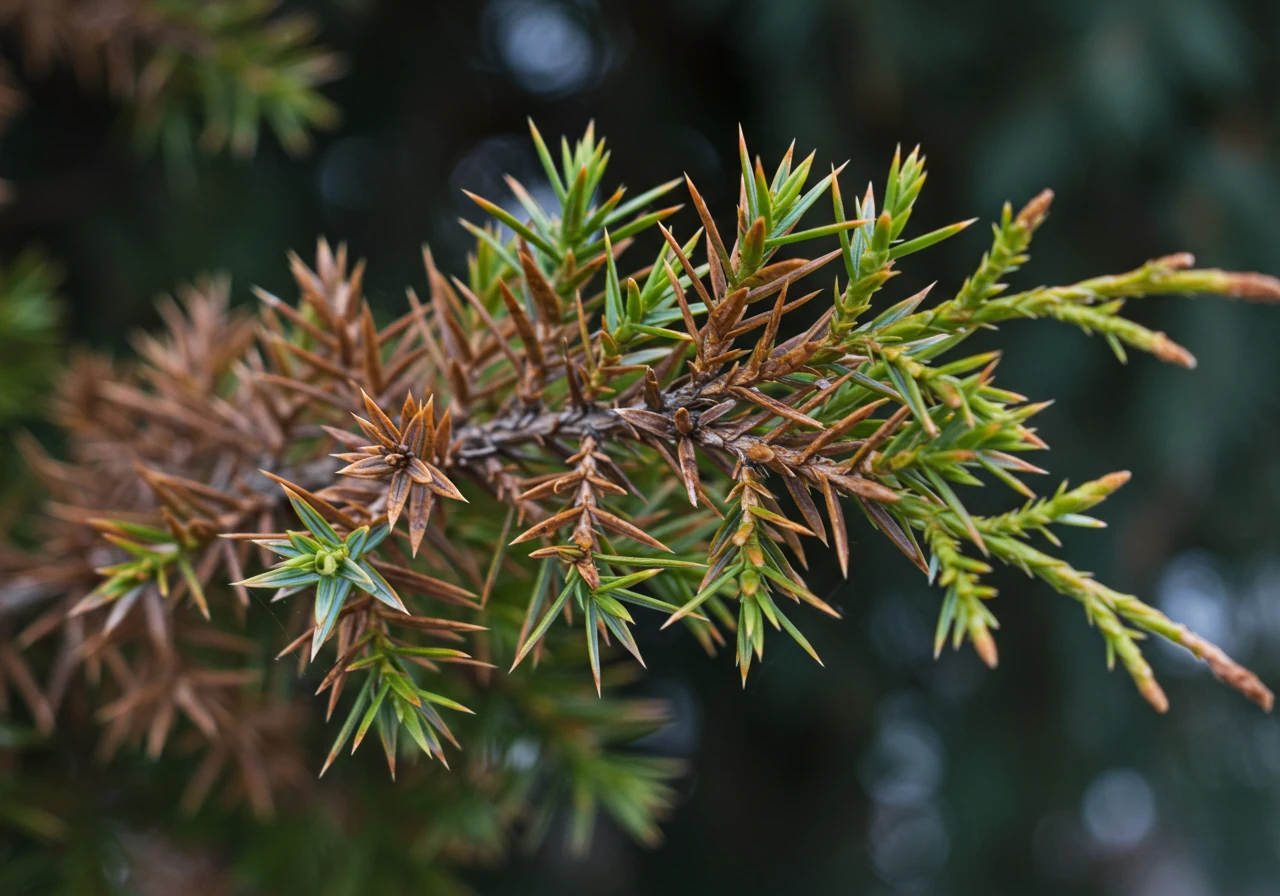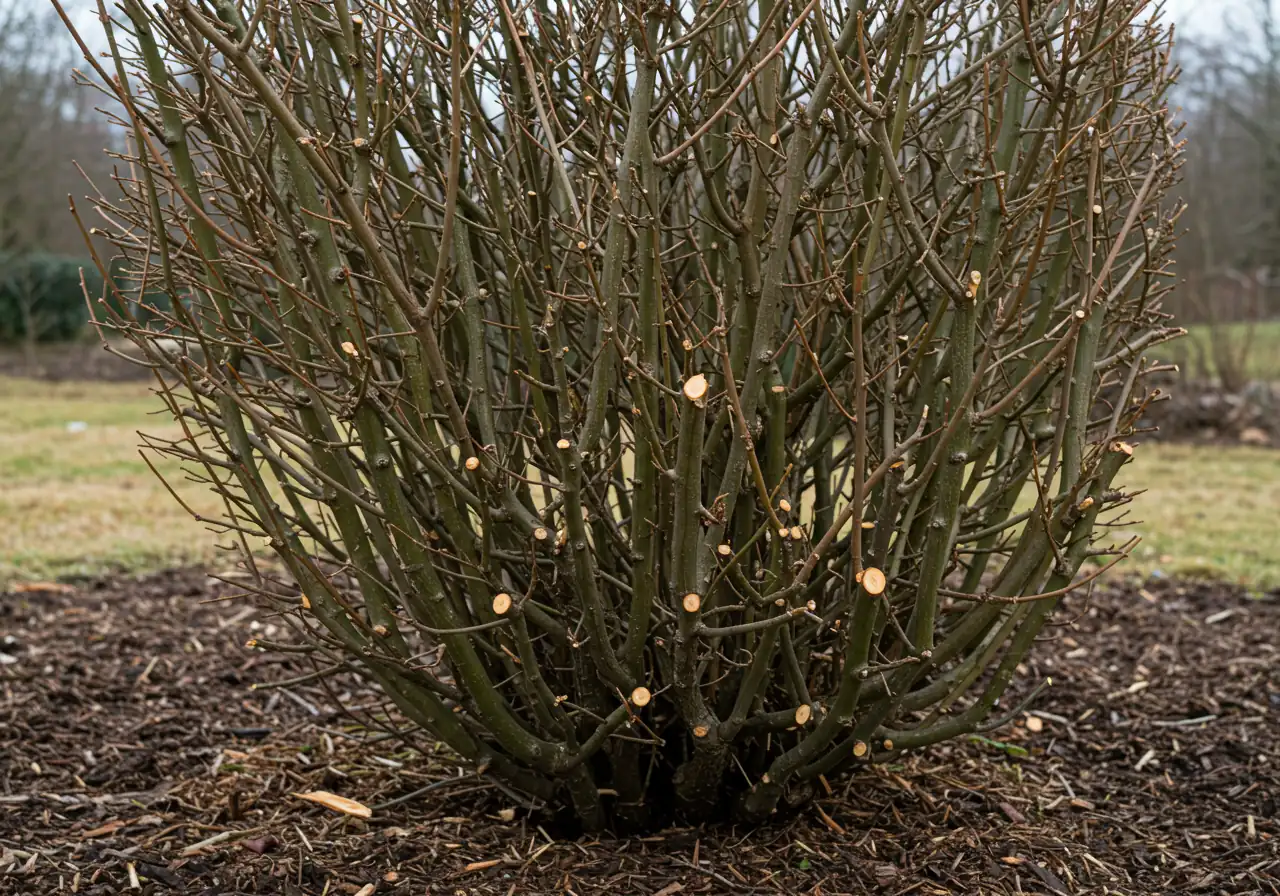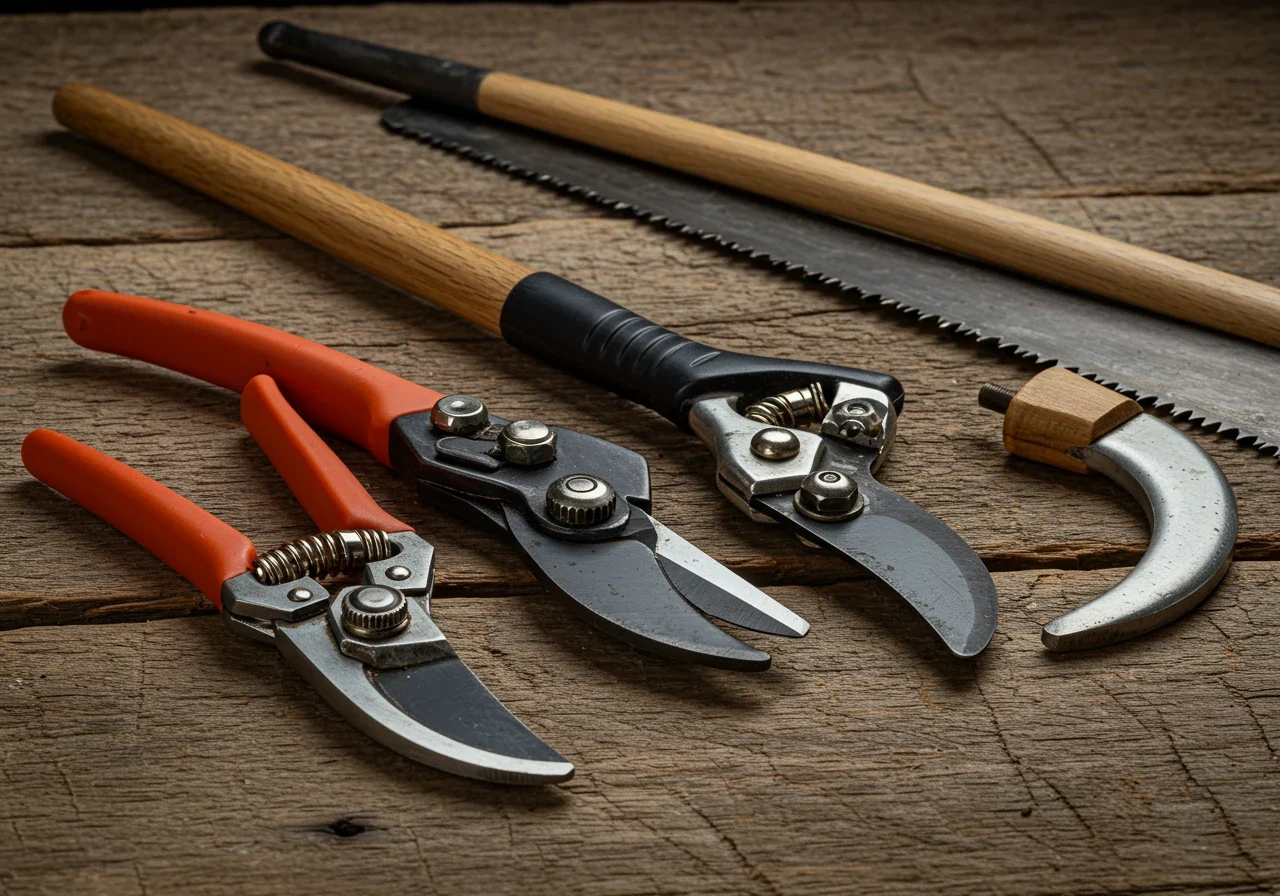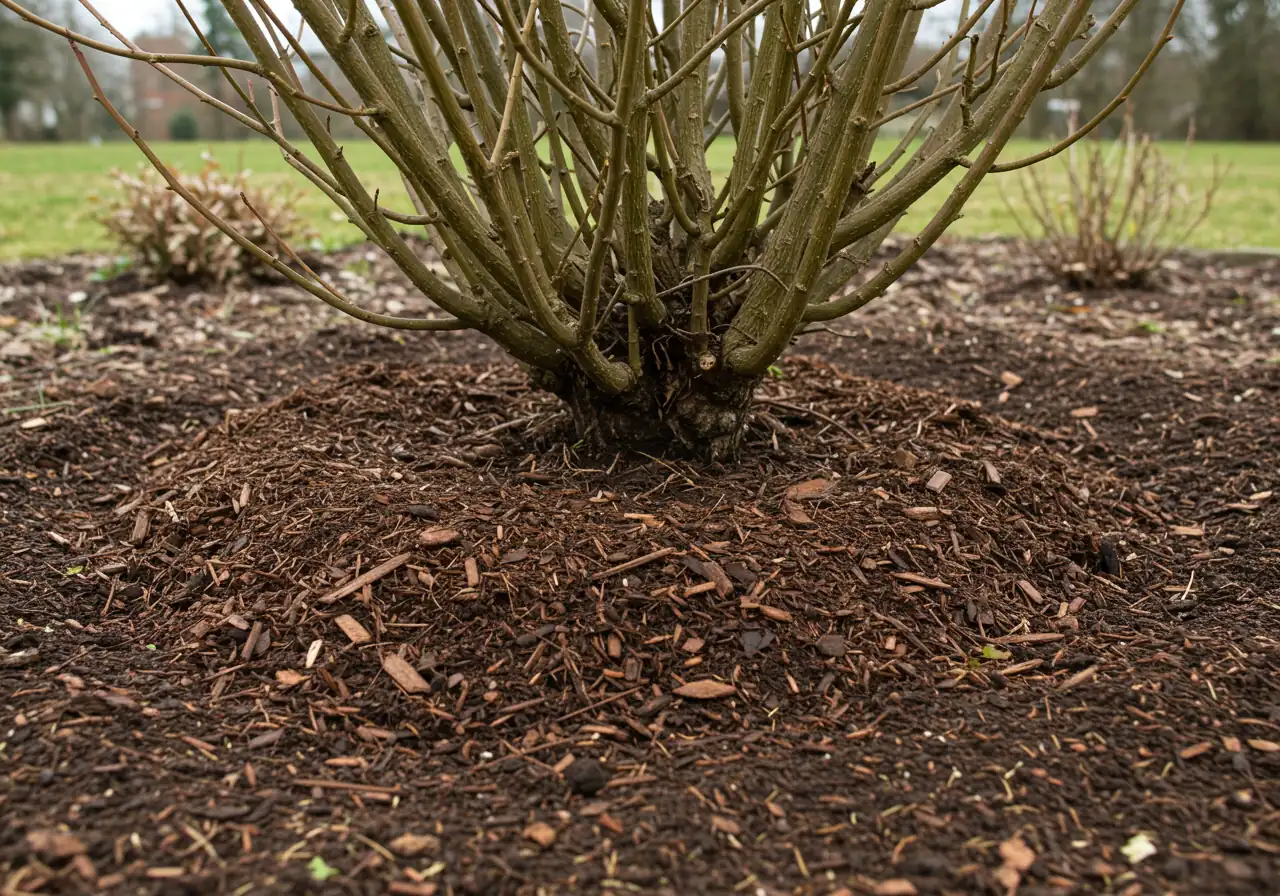Fix Osgoode Winter Shrub Damage: Renovation Pruning
Winter can be tough on Osgoode gardens! If your shrubs look damaged, don't despair. Renovation pruning can rejuvenate them. Need help assessing the damage or performing the pruning? Request a quote today!
- Winter damage (broken branches, winter burn, salt damage) is common in Ottawa/Osgoode.
- Renovation pruning is a drastic cut-back technique to rejuvenate specific deciduous shrubs.
- Best time for renovation pruning: Late winter/early spring (March/April).
- Use sharp, clean tools and choose the right method (full reset vs. gradual).
- Post-pruning care (water, mulch) is crucial for recovery.
Introduction: Uh Oh, Osgoode! Winter Wasn't Kind to Your Shrubs?
Well, hello there, Osgoode! Did you peek outside this spring, maybe after that *last* stubborn snowfall finally melted, and think, "Uh oh"? You're definitely not alone. Our tough Ottawa winters can be *brutal* on the garden, and our poor shrubs often bear the brunt of heavy snow, freezing rain, and icy winds. If your yard is looking a bit worse for wear – think snapped branches, maybe some weird squashed shapes, or sad, brown leaves where vibrant green *should* be – please don't despair! Winter damage is a common landscaping headache for homeowners right here and in nearby communities like Greely, too.
The fantastic news is that hope isn't lost for your woody plants! There's often a way to help them bounce back and look beautiful again. This section is all about tackling that winter aftermath head-on. We'll be diving into the techniques of *renovation pruning*, which sounds fancy but is essentially giving your tired or damaged shrubs a strategic haircut for a fresh start. Think of it as a recovery plan to bring your landscape back to its lovely self. Let's explore how to assess the damage and get pruning!
Decoding Winter's Wrath: Common Shrub Damage Seen Around Ottawa

Ah, Ottawa winters. We love the skating on the canal, the cozy nights, maybe even the first magical snowfall... but our shrubs? They often have a different opinion after months battling the elements! If your landscape is looking a bit rough around the edges come spring, you're likely seeing some classic signs of winter damage. Let's break down the usual suspects you might find in your yard, whether you're in leafy Manotick or closer to the city bustle in Nepean.
- Snappity Doo Dah! (Broken Branches): This is probably the most obvious damage. Our heavy, wet snow can pile up relentlessly, and ice storms coat branches until they groan and... *snap*. Tall, upright shrubs like cedars and junipers are particularly prone to bending and breaking under the weight. Sometimes, even with the best preparation, like considering Proper Fall Tree and Shrub Pruning Before Winter Hits, extreme weather wins.
- Winter Burn (The Unwanted Tan): See sad, brown, or "scorched" looking patches on your evergreen leaves or needles, especially on the side facing the wind or sun? That's winter burn. It happens when the plant loses moisture from its leaves due to winter sun and wind, but its roots are frozen solid and can't replenish the water. It’s like getting dehydrated when you can’t reach your water bottle! Check out reliable resources like the Ottawa Horticultural Society for tips on protecting evergreens.
- Salt Sickness: If your shrubs are near roads, driveways, or sidewalks (a common issue in denser areas like Barrhaven), they might suffer from salt damage. Spray from plows or runoff from treated surfaces gets absorbed by the plant, causing burnt-looking leaf edges, stunted growth, or even branch dieback. Choosing salt-tolerant plants can be part of a smart Osgoode Flower Bed Design for Vibrant Colour and Resilience, especially in vulnerable spots.
- Pesky Critter Cafeteria: When snow cover is deep, hungry mice and rabbits can turn the base of your shrubs into their winter buffet. Look for gnawed bark near the ground line, sometimes completely girdling (circling) the stem, which can unfortunately be fatal to the branch or even the whole shrub.
- The Big Chill & Heave (Root Damage): Ottawa's freeze-thaw cycles can be rough on roots. As the ground freezes, thaws slightly, and refreezes, it can expand and contract, potentially "heaving" shallow-rooted shrubs right out of the ground or damaging roots. This is often more pronounced in certain soil types. Understanding Tips for Osgoode Clay Soil Garden Care in the Fall can help prepare your garden beds better. Protecting the root zone with mulch is key, just like protecting your irrigation lines with a thorough Osgoode Sprinkler System Winterization Blow-Out is crucial to prevent underground freeze damage.
Seeing this kind of damage can be disheartening, but don't grab the shovel just yet! Many shrubs can recover with the right care and pruning. If assessing the damage feels overwhelming, remember that professional help is available to diagnose the issues and get your landscape back on track. You can explore various options with local Landscaping and Yard Care Services. Find trusted professionals by checking reviews, like those on our Google Business Profile.
Common Winter Damage Types
Winter in Ottawa can lead to various shrub issues:
- Broken Branches (snow/ice weight)
- Winter Burn (evergreen dehydration)
- Salt Damage (near treated surfaces)
- Animal Damage (gnawing bark)
- Root Heaving (freeze/thaw cycles)
Proper assessment is key before pruning.
Shrubs Known for Resilience
Some shrubs handle Ottawa winters and renovation pruning better than others:
- Spirea
- Dogwood (Red Osier)
- Potentilla
- Ninebark
- Forsythia
Always verify your specific shrub type before hard pruning.
Winter Damage Prevention
While not always avoidable, some steps can help:
- Wrap sensitive evergreens with burlap.
- Use shrub shelters or A-frames for upright shrubs prone to snow load.
- Apply mulch to insulate roots.
- Water well in the fall before ground freeze.
- Consider protective barriers against salt spray.
- Proper fall pruning can reduce snow load risk.
For more local advice, check resources like the Friends of the Central Experimental Farm.
Renovation Pruning: Giving Your Shrubs a Second Chance (Not Just a Haircut!)

Okay, let's talk about those shrubs that look less like graceful landscape features and more like they wrestled a snowplow... and lost. Sometimes, winter damage, old age, or just enthusiastic neglect leaves a shrub so overgrown, sparse, or damaged that a simple trim just won’t cut it. This is where *renovation pruning* steps in – it's less of a gentle shape-up and more like hitting the reset button for your plant. Think major makeover, not just tidying the edges!
So, what exactly *is* renovation pruning? It’s a more drastic technique used to rejuvenate certain types of shrubs that have become leggy, unproductive, or severely damaged. Instead of just snipping off the tips, you're often cutting the *entire* shrub back very hard, usually down to about 15-30 cm (6-12 inches) from the ground. Yikes, right? It sounds harsh, but for the *right* plants, this encourages vigorous new stems to shoot up from the base, resulting in a fuller, healthier, and often more floriferous shrub in the long run.
It's crucial to understand this isn't your everyday pruning. Here’s a quick comparison:
| Feature | Regular Pruning | Renovation Pruning |
|---|---|---|
| Goal | Maintain shape & size, remove dead/diseased twigs, light thinning. | Complete rejuvenation of old/overgrown/damaged shrubs. |
| Amount Removed | Typically less than one-third of the plant. | Most or *all* old stems, cut back severely. |
| Timing | Varies by plant (e.g., after flowering, late winter). | Late winter or very early spring, before new growth starts. |
| Frequency | Annually or as needed for maintenance. | Infrequently, only when drastic renewal is needed (maybe every 3-5+ years). |
Now, *don't* go grabbing the loppers for every plant! This technique only works well for certain deciduous shrubs known for their ability to regrow strongly from the base or old wood. Around Ottawa and neighbouring areas like Manotick or Metcalfe, good candidates often include:
- Forsythia
- Lilac (Common Lilac)
- Honeysuckle (vine types are different)
- Potentilla
- Spirea (many varieties)
- Red Osier Dogwood (and similar twiggy dogwoods)
- Ninebark
- Weigela
Shrubs that generally *cannot* handle renovation pruning (or being cut back into old wood) include most evergreens:
- Junipers
- Cedars (Arborvitae)
- Pines
- Spruce
- Yews (can sometimes tolerate it, but recovery is slow and uncertain)
- Also, plants like Daphne or some Rhododendrons typically resent hard pruning.
Attempting renovation pruning on these unsuitable plants will likely result in permanent bare patches or even kill the shrub.
Performing renovation pruning creates a *lot* of debris. If tackling this yourself leaves you with more branches than you can handle, remember that cleanup is part of comprehensive yard care. Whether you need an Osgoode Spring Yard Cleanup Service or help further out with Marionville Property Cleanup Services, getting the site tidy is key. We offer City-Wide Yard Cleanup Services to help manage the aftermath.
If you're unsure whether your specific shrub is a good candidate or if the task feels too daunting, seeking professional advice is always a smart move. Explore different Landscaping and Yard Care Options to find the right fit for your needs. The goal is a healthy, thriving shrub that makes you so happy, you’ll want to send *us* to the Client Satisfaction Thank You Page! Renovation pruning, when done correctly on the right plant, truly offers a second chance for beauty in your garden.
The Right Time for a Shrub Makeover: Scheduling Renovation Pruning in the Ottawa Valley
Alright, fellow Ottawa Valley garden enthusiasts, let's talk timing! Just like you wouldn't plan a BBQ during a February blizzard (though, points for optimism!), giving your shrubs that drastic renovation prune needs careful scheduling for the best results. Get the timing wrong, and you might stress your poor plant more than you help it. So, when *is* the golden window for this major shrub haircut here in our neck of the woods?
The sweet spot is *late winter or very early spring*. Generally, this means late March or April in the Ottawa area, but Mother Nature likes to keep us guessing, right? The key is to prune *before* the shrub bursts into leafy action, but *after* the absolute harshest freezing temperatures are behind us.
Why is this timing so critical? It’s all about working *with* your shrub's natural rhythm:
- Still Snoozing: The plant is mostly dormant, like it's hitting the snooze button before spring. Pruning now is less shocking to its system than cutting it back when it's actively growing.
- Fuel in the Tank: It has stored energy reserves in its roots over winter, ready to power a big push of new growth. Cutting it back hard now channels all that energy into producing fresh, strong stems from the base or remaining framework. Hello, rejuvenation!
- Quick Patch-Up: Pruning just before the sap starts flowing means the cuts will begin healing almost immediately as growth starts. This seals the wounds faster, lowering the risk of nasty diseases or pests moving in.
- X-Ray Vision: Okay, not really, but with no leaves obscuring your view, you get a much clearer picture of the shrub's branching structure. This makes it way easier to see where to make those important cuts for the best future shape.
Late Winter (March/Early April)
Ideal time! Shrub is dormant, energy stored in roots. Cuts heal quickly as growth starts. Clear view of structure.
Spring (Late April/May)
Getting late. Plant is actively growing, pruning now removes energy spent on leaves. Recovery may be slower.
Summer
Avoid hard pruning. Plant is stressed by heat; focus only on light shaping or removing deadwood.
Fall
Not recommended for hard pruning. Can stimulate new growth that won't harden off before winter.
Mid-Winter
Too early. Fresh cuts exposed to harsh cold and drying winds for too long, risking dieback.
How do you know *exactly* when? Watch for nature's clues! The deep snow cover should be gone or mostly melted, the ground should be starting to thaw (you can poke it without hitting ice!), and the buds on the branches might look a *little* plump, but *definitely* haven't opened or started showing green tips. Keep in mind that microclimates play a role! A sheltered backyard in Richmond might be ready a bit sooner than an exposed, wind-swept spot out near Vernon or Kenmore. Observe *your* specific garden conditions.
What happens if you miss the window?
- Pruning too early (mid-winter): Leaves those fresh cuts vulnerable to extreme cold, drying winds, and repeated freeze-thaw cycles for too long, potentially causing dieback.
- Pruning too late (after leaves emerge): The plant has already spent precious energy producing those leaves you're about to cut off – talk about inefficient! This stresses the shrub significantly, recovery will be slower, and you'll likely sacrifice any flowers or fruit for that year.
You could almost sketch out a simple seasonal pruning mini-calendar: Late Winter/Early Spring = Go time for renovation pruning! Summer = Light shaping or deadheading only. Fall = General cleanup and removing deadwood. Tackling a big renovation prune often generates a surprising amount of branches. If the cleanup feels overwhelming, remember professional help is available, whether you're looking for a dedicated Marionville Property Cleanup Service or broader assistance via a City Property Cleanup Service.
Occasionally, even with perfect timing, an old or severely damaged shrub might not bounce back as hoped. If renovation doesn't seem viable, or you simply decide it's time for a change, considering a new Garden Bed Installation and Planting Service could be your next step to refresh the space. When engaging any service provider, it’s always wise to understand how things work; feel free to review our online Privacy Policy and standard Terms and Conditions.
Hitting that late winter/early spring window is truly your best strategy for giving those weary shrubs a successful fresh start!
Your Step-by-Step Guide to Renovation Pruning (Don't Worry, You Got This!)

Okay, deep breath! Staring down a tangled, overgrown shrub that looks like it survived a wrestling match with a snowplow can feel a bit intimidating. But trust us, tackling renovation pruning is totally doable, and your shrub will thank you for it later! Think of it less as scary surgery and more like a revitalizing spa day that gives your plant a fresh start. Let’s walk through the process together, step by step.
1. Gear Up: Your Pruning Toolkit
First things first, gather your trusty tools. Having the right equipment makes the job easier and better for your plant:
- Bypass Pruners: These are your go-to for smaller stems, roughly up to the thickness of your thumb. The blades sweep past each other like scissors, making a clean cut that heals nicely.
- Loppers: Basically long-handled pruners, giving you more leverage for thicker branches (up to about 1.5 inches or 4 cm). Less straining for you!
- Pruning Saw: When loppers aren't enough for those hefty old stems, a pruning saw is your friend. Choose one designed for green wood if possible.
- Gloves: Protect your hands! Rose thorns and rough bark are no joke.
Super Important Tip: Make sure your tools are *SHARP* and *CLEAN*. Sharp blades make clean cuts that heal faster and are less stressful for the shrub. Dull blades crush stems, leaving ragged wounds open to disease. Wipe your blades with rubbing alcohol (or a disinfectant wipe) before you start and between plants, especially if you suspect any disease.
2. Choose Your Adventure: Hard Reset or Gradual Glow-Up?
Remember, this major prune is best suited for certain hardy deciduous shrubs (like we talked about earlier!). Now, decide on your strategy based on the shrub's condition and your comfort level:
- Method 1: The Full Reset (Hard Pruning)
- When to use it: For shrubs that are seriously overgrown, leggy, unproductive (few flowers), or severely damaged by winter storms. Also great for plants known to respond well, like many spireas, potentillas, red-twig dogwoods, or ninebarks.
- How to do it: Take a deep breath... and cut *all* the stems back to about 15-30 cm (6-12 inches) from the ground. Yes, it will look like a bunch of sad sticks for a little while! But this encourages a huge burst of fresh new growth from the base. The results can be truly stunning – check out some examples of shrub and garden Dramatic Landscape Transformations to see what's possible!
- Method 2: The Gradual Glow-Up (Renewal Pruning)
- When to use it: If the shrub isn't in *terrible* shape, if you're a bit nervous about the hard prune, or for shrubs like common lilacs that sometimes respond better to a slower approach.
- How to do it: This is a three-year plan. Each year (in late winter/early spring), identify and remove about one-third of the oldest, thickest stems, cutting them right down to the ground. Choose the woodiest, least productive stems first. By year three, you'll have replaced all the old growth with vigorous new shoots, all without completely removing the shrub's presence in your landscape.
3. Making the Cut (Like a Seasoned Pro!)
Whether you choose method 1 or 2, *how* you make each cut matters for the plant's health:
- Target: Aim to cut just above a healthy, outward-facing bud or a strong side branch. This directs the new growth outwards, keeping the center of the shrub open for air and light.
- Angle: Make your cuts at a slight angle (around 45 degrees), slanting away from the bud. This allows rainwater to run off easily instead of pooling and potentially causing rot.
- No Stubs: Avoid leaving long, awkward stubs above a bud or branch. These will just die back anyway and can be an entry point for pests or disease. Cut cleanly and close (but not *so* close you damage the bud or main stem).
Expected Growth After Pruning (Example)
Recovery varies, but here's a hypothetical look at potential new growth height by end of the first season for well-cared-for shrubs after hard pruning:
*Note: Actual growth depends on species, health, weather, and care.*
4. Tidy Time: Dealing with the Debris
Whoa, you probably have quite the mountain of branches now! Cleaning up is key. Here are some eco-friendly options for Ottawa residents:
- Green Bin Power: Ottawa's Green Bin program accepts twigs and branches. Cut them down to meet the City's size and bundling requirements – check the City of Ottawa website for current details.
- Mulch Magic: If you have access to a chipper/shredder (you can often rent them), turning those branches into wood chip mulch is fantastic for your garden beds! This relates to good Mulching and Edging practices.
- Rural Considerations: If you're in areas like Osgoode or Winchester, disposal options might differ. Check your local township's rules regarding yard waste drop-off sites or burning regulations (permits are often required and restrictions apply – safety first!).
- Call for Backup: If the cleanup feels overwhelming, professional help is readily available. A dedicated City Property Cleanup Service can handle large volumes of yard waste efficiently. We even offer localized help such as a Marionville Garden Clean Up Service if that's closer to home. Proper cleanup is a vital part of complete Ongoing City Garden Maintenance Service. For specific cleanup needs, check Ottawa Garden Clean Up Service or Metcalf Garden Clean Up Service or City Garden Clean Up Service.
5. A Little TLC Afterwards
Once the pruning and cleanup are done, give your shrub a good watering, especially if the ground is dry. Applying a layer of compost around the base (not touching the stems) can also give it a nice nutrient boost as it starts to regrow. Consider options for Material Selection if adding amendments.
You Did It! (High Five!)
See? Renovation pruning isn't nearly as terrifying as it sounds. It takes a bit of planning and courage, but the reward is a healthier, more vibrant shrub ready to grace your landscape for years to come. If you get stuck, have questions about a specific shrub, or decide this project is bigger than you want to handle alone, don't hesitate to Contact Us for Pruning Advice or Assistance. We're happy to help! Now, go admire your handiwork!
TLC for Your Trimmed Treasures: Post-Pruning Care for Robust Recovery

Whew! You did it. The big chop is complete, and while your shrub might look a little... *exposed*... right now (don't worry, it's just a phase!), you've given it a fantastic fresh start. But the job isn't quite finished. Your newly pruned shrub needs some dedicated TLC to bounce back strong. This follow-up care is crucial for ensuring a robust recovery, whether your garden is in the heart of Ottawa or in lovely established neighbourhoods like Russell or Embrun.
First up: Water! That severe pruning triggers the plant to push out lots of new growth, and that takes serious hydration. Keep the soil around the base consistently moist, especially during those surprisingly dry spells we often get in Ottawa summers. Aim for deep, less frequent watering rather than light daily sprinkles. This encourages deeper roots, making the shrub more resilient long-term.
Next, let's talk mulch magic. Applying a 2-3 inch layer of organic mulch (like shredded bark or wood chips) around the base is like giving your shrub a cozy blanket. It helps retain soil moisture, suppresses pesky weeds competing for resources, and moderates soil temperature. *Crucial tip:* Keep the mulch a few inches *away* from the actual stems to prevent rot and discourage unwanted visitors. Maintaining this tidy, mulched area is also part of good overall Property Clean Up practices. Perhaps you even generated your own mulch during the initial pruning, a task we often handle, much like our specific Metcalf Property Cleanup Service helps manage local yard waste efficiently.
Now, about fertilizer... hold your horses! Renovation pruning itself is a huge signal to grow. Especially here in the Ottawa area where clay soils often hold nutrients well, adding strong fertilizer right away can be too much of a good thing, potentially stressing the plant or causing weak growth. A gentle top-dressing of compost is usually plenty. This careful approach supports overall garden health, similar to how proper Ottawa Lawn Care focuses on building healthy soil first.
Finally, be patient and observe. New shoots might seem slow to appear at first, but give them time. Watch for healthy green growth emerging from the base or remaining stems. If things seem stalled or you notice any issues, don't hesitate to Contact Us for Professional Guidance. Sometimes a little expert advice makes all the difference. You can learn more about our philosophy on helping landscapes thrive by checking out the About Us page. Give it time, water, and that mulch blanket – your revitalized shrub will soon reward your efforts!
Highlight Box: Renovation Pruning Quick Tips
- Perfect Timing: Aim for late winter or very early spring – usually March or April here in Ottawa and neighbourhoods like Barrhaven – *before* buds break, but *after* the worst cold snaps.
- Know Your Candidates: This drastic haircut is great for hardy deciduous shrubs (think Spirea, Dogwood, Forsythia, Potentilla). *Super Important:* Avoid doing this to most evergreens like Cedars or Junipers; they usually won't regrow from old wood!
- Choose Your Method: Either cut *all* stems back hard to 6-12 inches for a total reset, or take a gentler approach by removing about one-third of the oldest, thickest stems right down to the ground each year for three years.
- Tools of the Trade: Always use *sharp*, *clean* bypass pruners, loppers, or a pruning saw. Clean cuts heal faster and prevent disease. Dull tools? Bad news bears for your shrub's recovery!
- Aftercare Essentials: Water the pruned shrub consistently, especially when it gets dry. Apply a 2-3 inch layer of mulch around the base (but not touching the stems!). Boosting the root zone with good compost is also wise; think of it as smart Soil Preparation for recovery. Consistent care is part of long-term Garden Maintenance.
- Brace for Debris (Seriously!): Renovation pruning creates a *lot* of branches. Be ready to bundle for the green bin, chip for mulch, or call for backup. If the cleanup feels massive, or if a shrub sadly doesn't recover and you decide to remove it (perhaps replacing it with grass via Expert Sod Installation), professional help like a comprehensive Property Clean Up service can make life much easier. We even offer specialized assistance, like our Marionville Yard Cleanup Service, for specific areas.
Osgoode & Ottawa Shrub SOS: Your Renovation Pruning FAQs Answered
Got questions swirling about giving your overgrown or winter-weary shrubs the big chop? You're not alone! Here are some common renovation pruning queries we hear from folks around Osgoode, Manotick, and the wider Ottawa area:
It's a valid worry! The biggest risk comes from trying this on the *wrong* shrub. Hardy deciduous shrubs (like spirea, dogwood, potentilla) usually bounce back beautifully. But attempting it on most evergreens (cedars, junipers) or less vigorous plants *can* be fatal. Stick to the recommended candidates, prune at the right time (late winter/early spring), and your shrub stands a great chance of thriving.
Oops! It's really best to wait until next late winter or early spring. Pruning hard in summer stresses the plant immensely, as it's already working hard in the heat. Fall pruning encourages tender new growth that won't survive an Ottawa winter. Patience pays off – mark your calendar for next March/April for the best results and less risk to your shrub's health.
Our clay soil actually holds moisture and nutrients quite well, which can be helpful for recovery! The downside is potential compaction. Avoid walking heavily around the base after pruning. Adding some compost as a top dressing (not digging it in aggressively) helps improve structure and provides gentle nutrients, supporting strong regrowth. Consistent Garden Maintenance helps keep soil healthy long-term.
Please don't! Renovation pruning, cutting back hard to near the ground, is generally *not* suitable for most evergreens like cedars, junipers, pines, or spruce. They typically won't sprout new growth from old, bare wood. Doing so will likely leave you with permanent bare spots or sadly kill the plant. Stick to removing only dead or broken branches on these guys.
You're not kidding – renovation pruning creates serious debris! Ottawa's green bin has size/bundling limits, so it might take weeks. You could rent a chipper, but for large amounts, calling in pros is often easiest. An Ottawa Property Cleanup Service can handle it quickly. If you're out near Metcalfe, there are local options too, like a Metcalf Yard Cleanup Service or even Ottawa Yard Cleanup Service. You can always get a quote first – our clients often share their thoughts via our Estimate Feedback page.
Conclusion: Bring Your Osgoode Shrubs Back from the Brink!
Okay, Osgoode neighbours, let's tie this all together! Seeing your shrubs looking less than their best after a harsh Ottawa winter can be disheartening. But remember, those winter battle scars don't spell doom! Renovation pruning, that big strategic haircut we discussed, is a fantastic *gardening* opportunity to give many suffering *shrubs* a complete fresh start. It’s your secret weapon for encouraging vigorous, *healthy growth*, leading to lusher shapes and more *vibrant* blooms. Think of it as hitting the reset button for beauty in your *landscape*.
Feeling a bit hesitant about making those big cuts yourself, or just unsure if your plant needs this drastic step? That's perfectly okay! If your garden is in *Osgoode*, *Kars*, *Richmond*, *Winchester*, or surrounding communities, we're ready to help. Let our experienced team provide a professional assessment and clear advice tailored to your *shrubs*.
Ready to transform those weary plants and rejuvenate your yard? Reach out for a friendly *shrub* health consultation, or simply request a no-obligation quote for expert *pruning* and other *landscaping* services. Let's work together to bring your plants back from the brink! For more tips on keeping your slice of Ottawa beautiful, feel free to explore our other *gardening* resources and blog posts.

